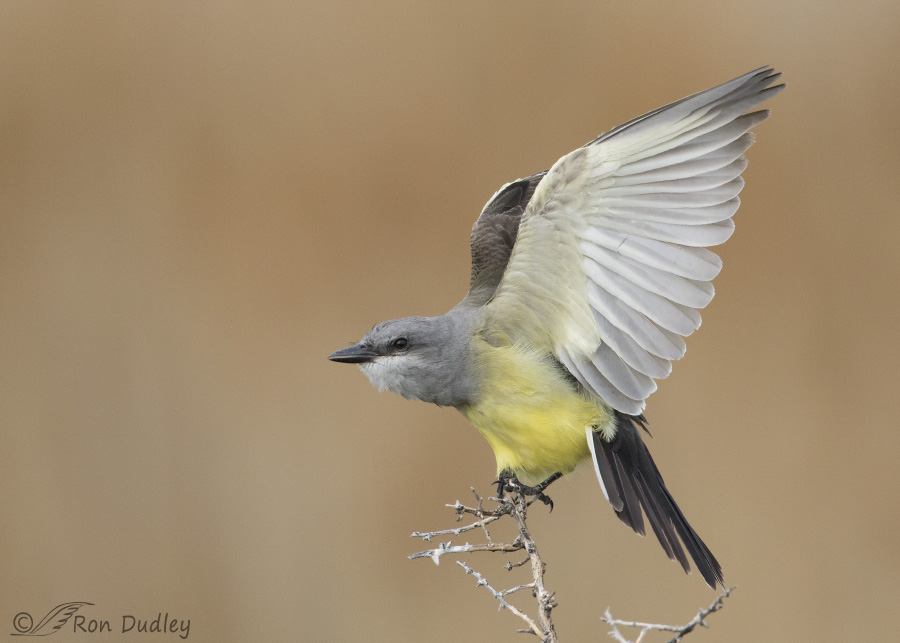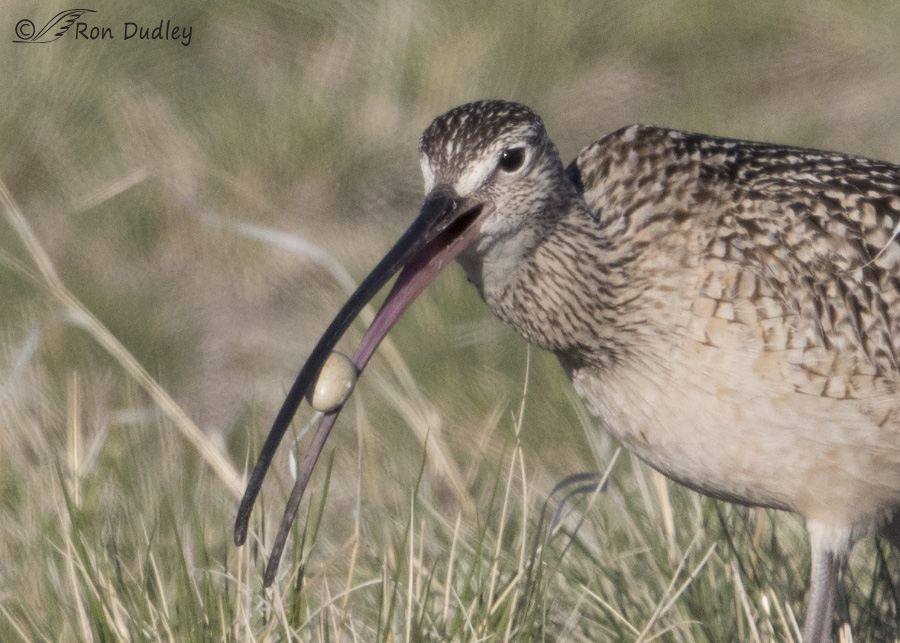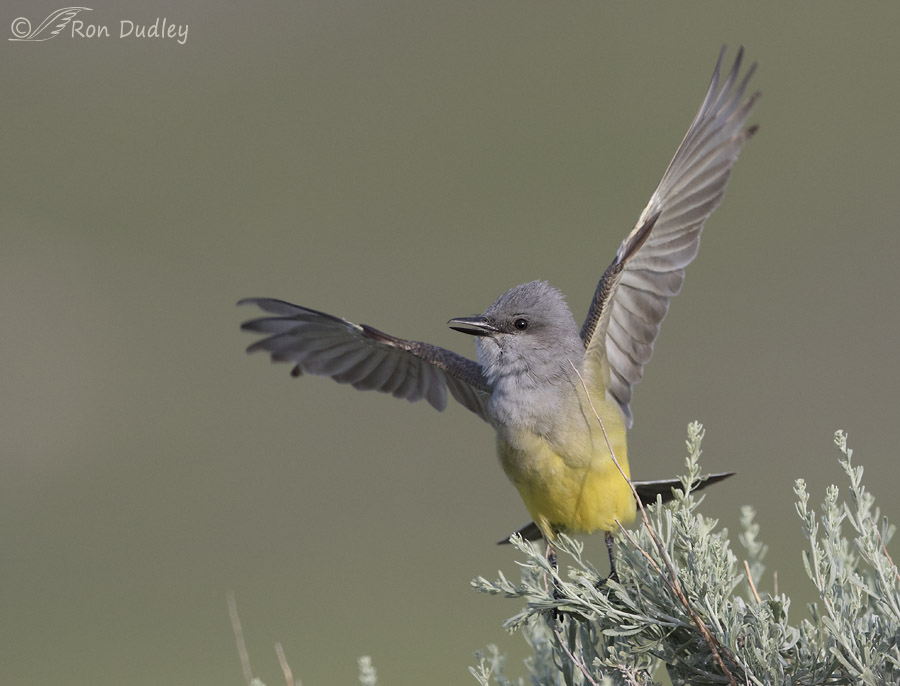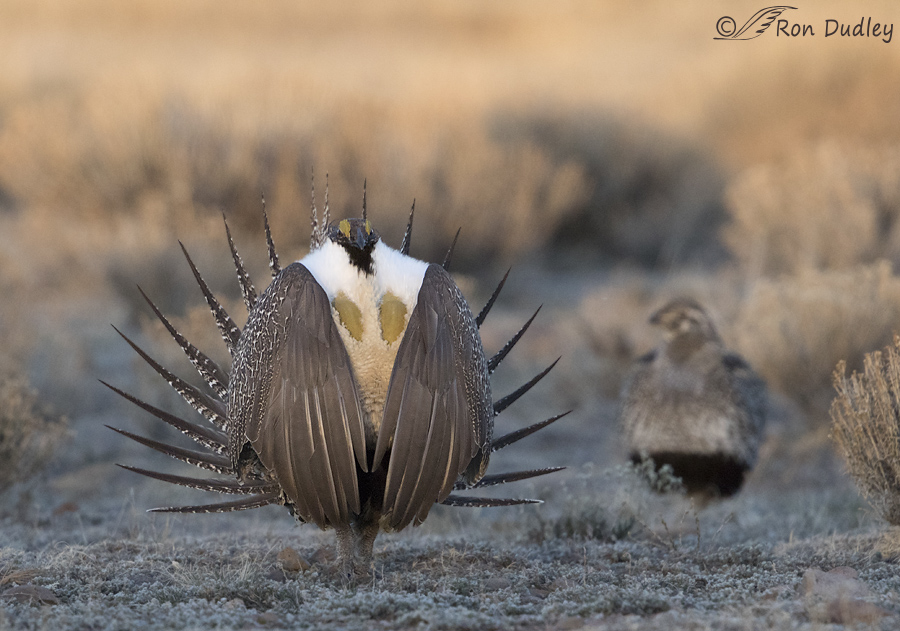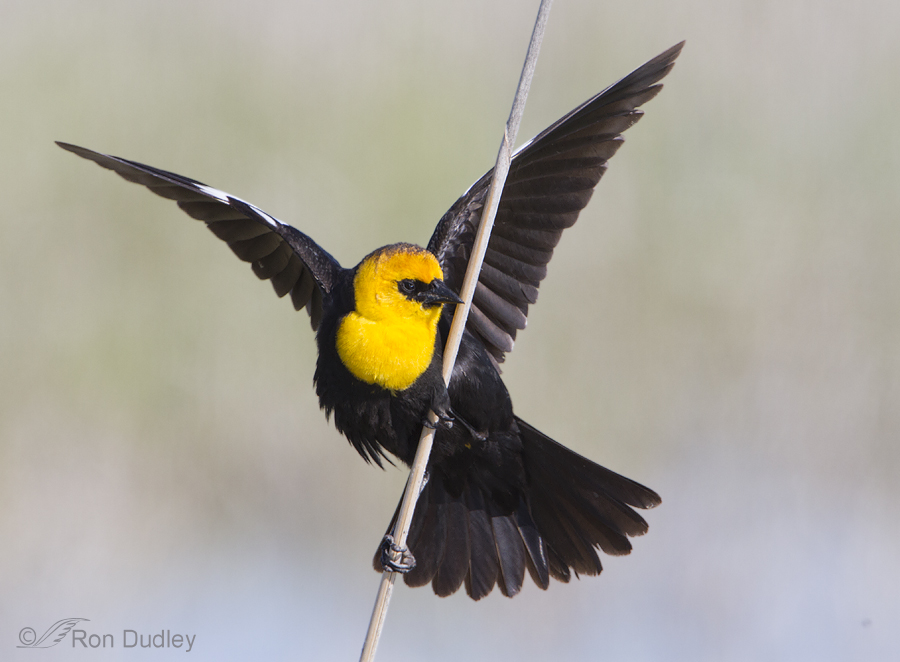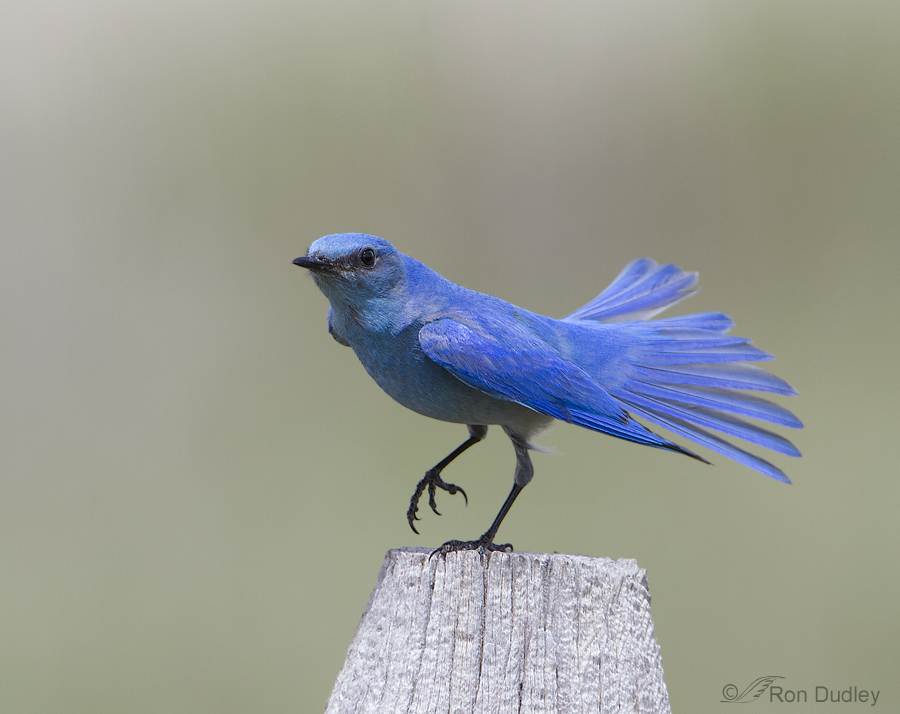Tag: display
Long-billed Curlew Eating A Horned Lark Egg
Male Western Kingbird Displaying, Then Taking Off
Perhaps A Classic Representation Of Sage Grouse On A Lek
Yellow-headed Blackbird Displaying
Dancing Bluebird
A Couple Of Interesting Pied-billed Grebe Behaviors
I love watching and photographing these small grebes because their pugnacious behaviors produce some fascinating interactions. They just may be the most aggressive bird species I’ve ever photographed.
Displaying Yellow-headed Blackbird
Welcome to the month of March everyone – for me a psychological barrier between the depths of winter and the promise of spring. It’s supposed to be almost 50 degrees today and that has me thinking of spring birds, warmer temperatures, liquid water and some actual greens in the landscape. By the Ides of March (only two weeks from now) male Yellow-headed Blackbirds will begin arriving in Utah and the females a week or two later. Almost immediately the males will begin their raucous calling as they compete for territories and later for females. This male was defending breeding territory in May. Males display two primary types of song spreads – the Symmetrical Song Spread and the Asymmetrical Song Spread. Each song spread is accompanied by a distinct song type. Here’s a link to one of them. In this sequence of images the male is displaying the Symmetrical Sound Spread where the bird spreads its wings to expose the white patches and the tail is lowered and spread. During this display he localizes with the song called the Accenting Song. Once a display begins it almost seems like the bird loses voluntary control of its actions and the display must be completed before it regains control (my unscientific observation). During part of this display the head is directed upward at 30-45 degrees. This behavior is often difficult for the bird to complete without losing its balance on the typically spindly perches they prefer. The whole thing is quite entertaining to watch. …
“Rushing” Western Grebes
The ritualized displays and courtship ceremonies of Western Grebes are among the most complex known in the bird world. One of them is called the “rushing ceremony” which includes 5 distinct phases – only one of which is actually referred to as “rushing”. Yesterday I finally was able to photograph this most dramatic part of the display and believe me it’s been a long time coming. Mia and I were photographing a pair of these grebes with chicks and though we both were aware of another small group of grebes a little further away I was concentrating so intently on those chicks that I didn’t notice what Mia noticed – that the behavior of two of those birds had suddenly changed. She said “they’re going to do something” so all I had time to do was quickly aim my lens at these birds and fire away. Without Mia I’d have missed the entire sequence. 1/2500, f/7.1, ISO 500, 500 f/4, 1.4 tc When rushing, the two birds (usually a mated pair but two males may also do it to attract females) lunge forward and rise completely out of the water. 1/2500, f/7.1, ISO 500, 500 f/4, 1.4 tc As their legs and feet start to churn at incredible speeds their bodies begin to become more vertical… 1/2500, f/7.1, ISO 500, 500 f/4, 1.4 tc until the birds are almost completely vertical to the water and their feet are slapping the surface so fast (16-20 steps per second) that the slapping and splashing noise is loud and can be heard a great distance away. The…
Western Kingbirds
Yesterday was a slow day on the island, though we did see our first Western Kingbird of the year (I should say that Mia saw it as I missed it – one of the disadvantages of being the driver…). The sighting got me to thinking about these aggressive tyrant flycatchers and reminded me of how much I’ve missed them these last few months so I decided to devote a post to them. They’re called “kingbirds” because of their belligerent behavior and fearless nature. Kingbirds are very aggressive toward other birds and it’s not unusual to see them attacking almost any species – including hawks and American Kestrels. They’re extremely agile in flight and can get away with such seemingly foolish behaviors. 1/800, f/7.1, ISO 500, 500 f/4, 1.4 tc In this shot you can see most if the important field marks – pale gray head and breast, darker mask through the eyes, underparts yellow, tail black with white edges and black bill. The sexes are similar. Most folks are unaware that the species has a small orange-red patch on the top of the head but it is nearly always hidden except while performing certain behaviors. 1/3200, f/6.3, ISO 500, 500 f/4, 1.4 tc These birds are almost unknown to walk anywhere – virtually all locomotion is by flight. Typically they hunt from elevated perches so they flit from perch to perch looking for insects mostly. When I’m lucky I find them on natural perches like this dried thistle… 1/1250, f/6.3, ISO 640, 500 f/4,…
Long-billed Curlew Eating A Horned Lark Egg
Male Western Kingbird Displaying, Then Taking Off
Perhaps A Classic Representation Of Sage Grouse On A Lek
Yellow-headed Blackbird Displaying
Dancing Bluebird
A Couple Of Interesting Pied-billed Grebe Behaviors
I love watching and photographing these small grebes because their pugnacious behaviors produce some fascinating interactions. They just may be the most aggressive bird species I’ve ever photographed.
Displaying Yellow-headed Blackbird
Welcome to the month of March everyone – for me a psychological barrier between the depths of winter and the promise of spring. It’s supposed to be almost 50 degrees today and that has me thinking of spring birds, warmer temperatures, liquid water and some actual greens in the landscape. By the Ides of March (only two weeks from now) male Yellow-headed Blackbirds will begin arriving in Utah and the females a week or two later. Almost immediately the males will begin their raucous calling as they compete for territories and later for females. This male was defending breeding territory in May. Males display two primary types of song spreads – the Symmetrical Song Spread and the Asymmetrical Song Spread. Each song spread is accompanied by a distinct song type. Here’s a link to one of them. In this sequence of images the male is displaying the Symmetrical Sound Spread where the bird spreads its wings to expose the white patches and the tail is lowered and spread. During this display he localizes with the song called the Accenting Song. Once a display begins it almost seems like the bird loses voluntary control of its actions and the display must be completed before it regains control (my unscientific observation). During part of this display the head is directed upward at 30-45 degrees. This behavior is often difficult for the bird to complete without losing its balance on the typically spindly perches they prefer. The whole thing is quite entertaining to watch. …
“Rushing” Western Grebes
The ritualized displays and courtship ceremonies of Western Grebes are among the most complex known in the bird world. One of them is called the “rushing ceremony” which includes 5 distinct phases – only one of which is actually referred to as “rushing”. Yesterday I finally was able to photograph this most dramatic part of the display and believe me it’s been a long time coming. Mia and I were photographing a pair of these grebes with chicks and though we both were aware of another small group of grebes a little further away I was concentrating so intently on those chicks that I didn’t notice what Mia noticed – that the behavior of two of those birds had suddenly changed. She said “they’re going to do something” so all I had time to do was quickly aim my lens at these birds and fire away. Without Mia I’d have missed the entire sequence. 1/2500, f/7.1, ISO 500, 500 f/4, 1.4 tc When rushing, the two birds (usually a mated pair but two males may also do it to attract females) lunge forward and rise completely out of the water. 1/2500, f/7.1, ISO 500, 500 f/4, 1.4 tc As their legs and feet start to churn at incredible speeds their bodies begin to become more vertical… 1/2500, f/7.1, ISO 500, 500 f/4, 1.4 tc until the birds are almost completely vertical to the water and their feet are slapping the surface so fast (16-20 steps per second) that the slapping and splashing noise is loud and can be heard a great distance away. The…
Western Kingbirds
Yesterday was a slow day on the island, though we did see our first Western Kingbird of the year (I should say that Mia saw it as I missed it – one of the disadvantages of being the driver…). The sighting got me to thinking about these aggressive tyrant flycatchers and reminded me of how much I’ve missed them these last few months so I decided to devote a post to them. They’re called “kingbirds” because of their belligerent behavior and fearless nature. Kingbirds are very aggressive toward other birds and it’s not unusual to see them attacking almost any species – including hawks and American Kestrels. They’re extremely agile in flight and can get away with such seemingly foolish behaviors. 1/800, f/7.1, ISO 500, 500 f/4, 1.4 tc In this shot you can see most if the important field marks – pale gray head and breast, darker mask through the eyes, underparts yellow, tail black with white edges and black bill. The sexes are similar. Most folks are unaware that the species has a small orange-red patch on the top of the head but it is nearly always hidden except while performing certain behaviors. 1/3200, f/6.3, ISO 500, 500 f/4, 1.4 tc These birds are almost unknown to walk anywhere – virtually all locomotion is by flight. Typically they hunt from elevated perches so they flit from perch to perch looking for insects mostly. When I’m lucky I find them on natural perches like this dried thistle… 1/1250, f/6.3, ISO 640, 500 f/4,…


